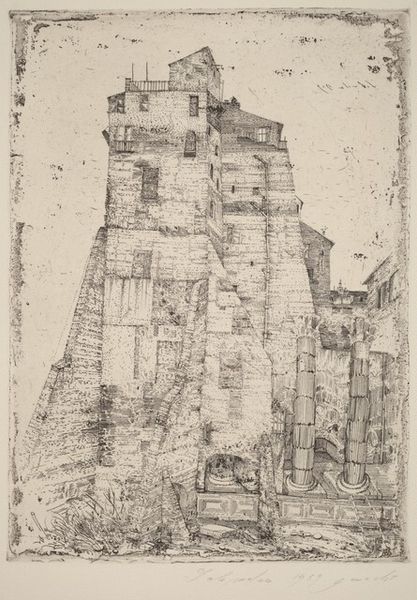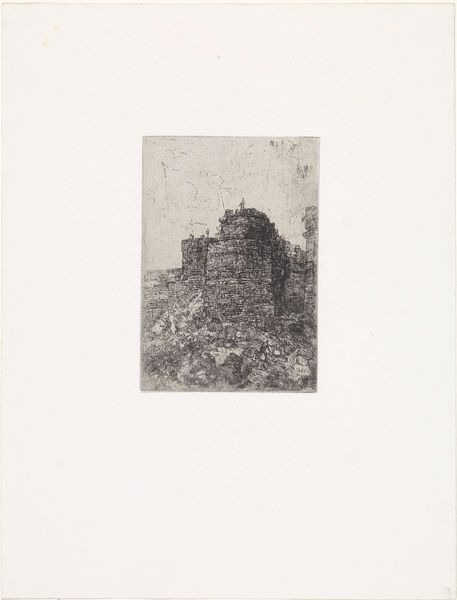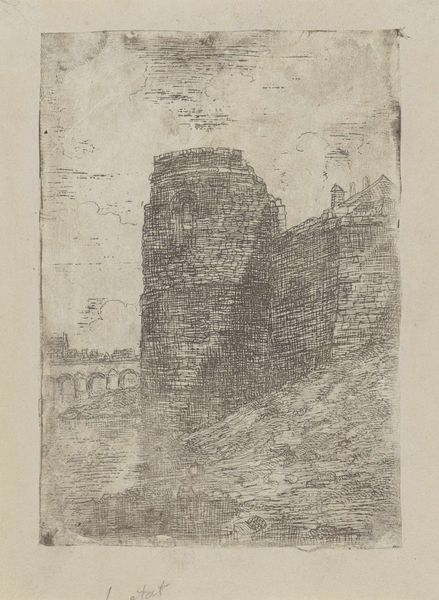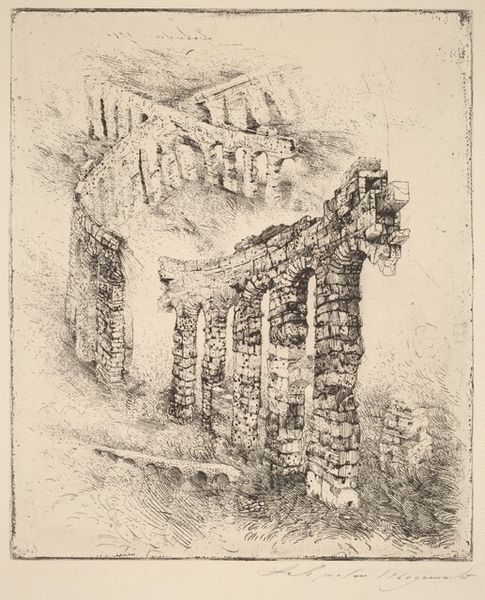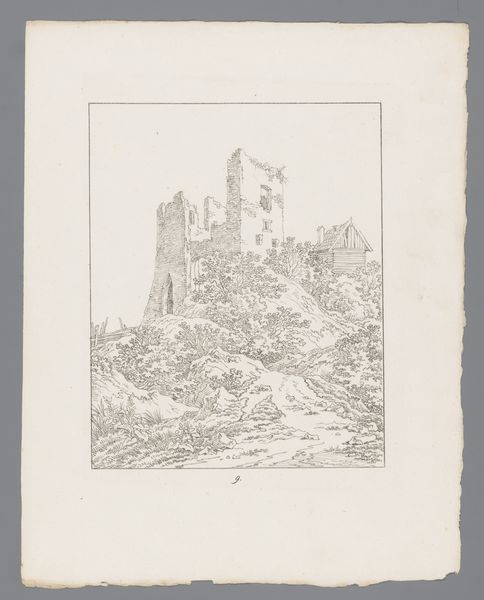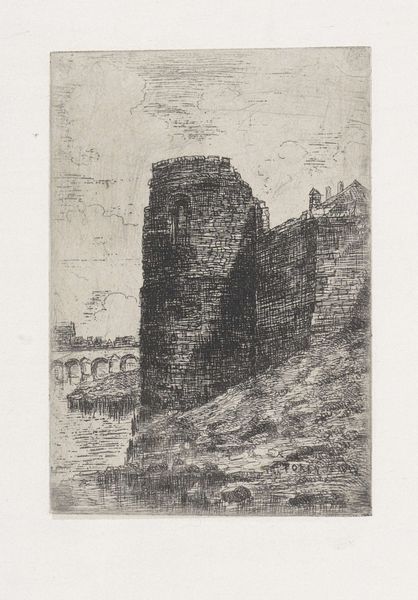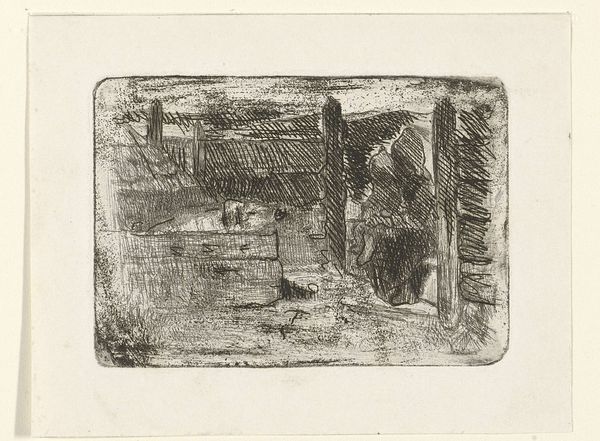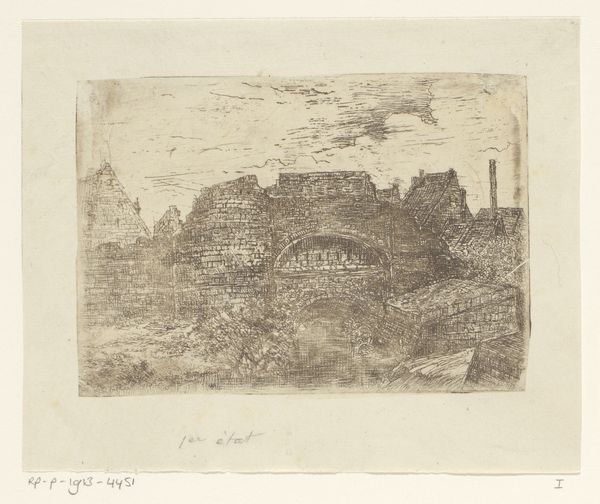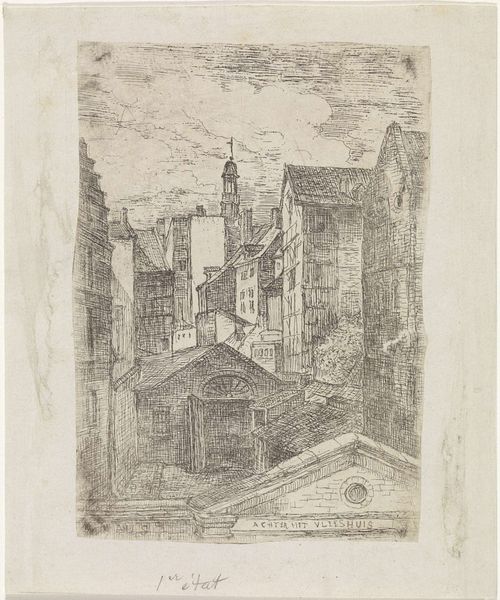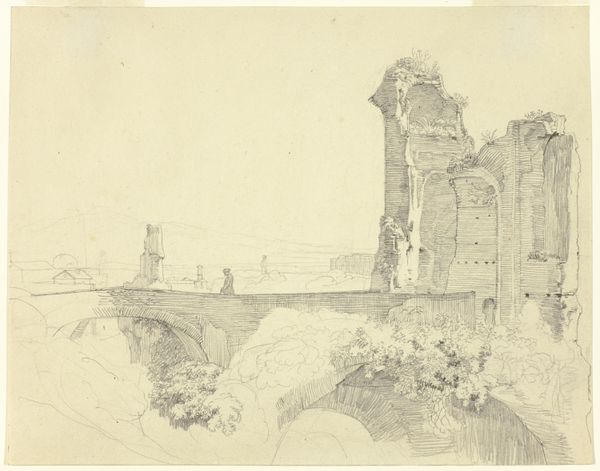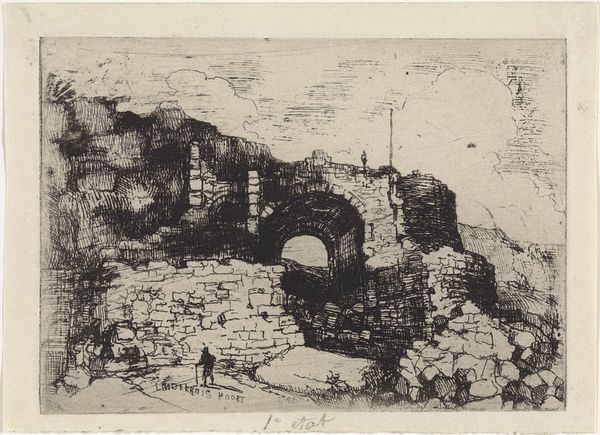
print, etching
# print
#
etching
#
landscape
#
etching
#
realism
Dimensions: height 185 mm, width 144 mm
Copyright: Rijks Museum: Open Domain
Editor: This is Alexander Schaepkens' etching "Bastion Lindenkruis te Maastricht," placing it somewhere between 1830 and 1899. The scene has a feeling of being unearthed; the fortress appears exposed, vulnerable even. How would you interpret its symbolism? Curator: It's compelling to see how Schaepkens depicts this bastion, not as a symbol of power, but almost as a relic. Fortifications, in their time, represented a community’s ability to defend its values, beliefs… its very identity. Now, observe its state. The erosion of the structure can represent a shift in those values or even the memory of a culture's defining identity. Editor: So the image evokes the transience of power and cultural identity? Curator: Precisely. The figures atop the bastion also provide symbolic weight. Are they surveying, rebuilding, or simply observing? Consider, too, the etching medium itself. The lines, the subtle gradations of light and shadow—what do they communicate about memory and the passage of time? Editor: The delicate lines and subtle contrasts do emphasize fragility. I hadn't considered the medium itself carrying that symbolism. Curator: Every element speaks. The fortress as a collective memory, the figures as actors within that memory, and the medium etching those impressions into our consciousness. Think of the weight these cultural artifacts carry – almost like emotional cartography – the memories that cling to these walls. Editor: It’s amazing how one image can hold so many layers of meaning. I’m definitely seeing more than just a historical depiction now. Thanks for pointing out how it ties into collective memory. Curator: Indeed. It's through recognizing these enduring symbols that we deepen our appreciation, connecting to the historical narrative and our shared cultural experiences.
Comments
No comments
Be the first to comment and join the conversation on the ultimate creative platform.
